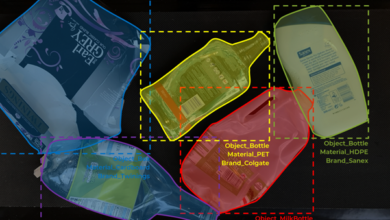
The tumult caused by the 2020 pandemic and subsequent global lockdown created wild shifts within the personal transportation industry. As accessibility to popular methods of commuting was limited, and in some cases completely unavailable, preferences for public transportation and ridesharing gave way to more personalized options that offered greater control, such as car sharing and car subscription services. In the last year alone, consumer interest in these options quadrupled.
This shift in consumer behavior has created both an opportunity and a challenge for fleet owners, who found themselves suddenly managing increasing demand while facing the same pandemic-level limitations plaguing the entire industry. To take advantage of this new market opportunity, fleet owners needed to optimize everything from the price of vehicles to their placement and availability, ensuring that these high-cost assets could be utilized to their full potential.
Navigating inventory balance
The problem of inventory balance is no small thing. Consider the cereal aisle in your grocery store as an example. How many boxes are optimal? Two boxes certainly aren’t enough – one person could sell out your inventory in a quick minute. Two thousand boxes, however, are far too many – they’ll take up too much space, sit too long and ultimately expire on the shelf.
Now pretend that each of those boxes of cereal cost $30,000. You start to gain an appreciation for the critical nature of inventory balance for car sharing fleet operators. The purchase of a car share is not unlike the purchase of a box of cereal – lots of people do it, it’s not a high-dollar transaction, and use of the car represents a small fraction of time. However, the cost of the asset itself is extremely high, requiring careful precision in inventory management if the fleet operator is going to be profitable.
There have been many approaches to inventory management over the years but in a new climate of heightened use and greater consumer demand for granular control of the vehicle experience, these methods are falling short. A critical component of achieving inventory balance is to adequately measure demand. Some of the ways this has been done include:
Evaluating app-opens: this method assumes that opening an app equates to intent to use the service. However, this method doesn’t account for many other factors that influence demand, such as the availability of alternatives, or whether the app open is simply an effort to learn about the service. It also doesn’t include insights into the time scale in which the purchasing decision is made. This method doesn’t work because it fails to appreciate the complex factors associated with demand.
Simulation-based: this method hypothesizes potential demand as part of a truncated or partially observed distribution. In practice these predictions seldom become reality. This is because it’s difficult — sometimes even impossible — to parameterize the actual environmental factors that drive car demand. What’s more, any estimate of demand must account for the complete picture of supply, demand, competition, convenience, and other non-price factors. Even if you have an estimate of how big demand might be, that estimate becomes unactionable in the presence of competition, making this method fallible.
If fleet owners are going to achieve inventory balance, it will be critical to eliminate the speculation surrounding these methods. This can get highly technical, but to quickly sum it up the ideal method to reduce speculation in demand is to measure market clearing at a specific time and place. This phenomenon of market clearing has a rigorous grounding in economics and enables measurement and comparison of a market, as well as optimizing the operational strategy within a market.
It’s this approach that answers the actionable question: How can I maximize overall revenue for my fleet by optimizing placement for the “n+1” marginal car?
Using AI to capitalize on inventory demand
This is where machine learning plays a critical role. Machine learning makes it possible for fleet owners to answer questions such as:
- How will I know if I have too many cars in one place?
- For any repositioning that I do, where should I put the n+1 marginal car that I do move?
- For any local market, how do I decide how far apart to space the cars? How localized is this market?
- How should the measurement of market localization affect my marketing and promotions campaigns?

Beyond answering questions about inventory optimization, using machine learning can enable time-series predictions for fleet owners, helping them to better understand car flow in any given area, at scale. For example, a fleet owner can use machine learning to trigger over-supply warnings, allowing them to respond by enabling price incentives to recoup revenue.
Machine learning can also provide insights into market opportunities, allowing an operator to better determine when they should move cars from one sub-market into another — without having to risk cannibalizing revenue or losing sales. Machine learning makes it possible to measure the willingness of a customer to walk to a shared car, enabling operators to maintain a high-quality experience while minimizing the risk of too many vehicles in one area.
The last 12 months have taught us that market changes can be swift and unrelenting. Fleet owners caught unaware have scrambled to find ways to better optimize their inventory and ensure they can meet customer demand while also maintaining profitability. Machine learning technology has proven to address the concerns of inventory management for fleet operators, helping them to better manage supply and demand while opening the door to increased revenues and better optimization of assets.





